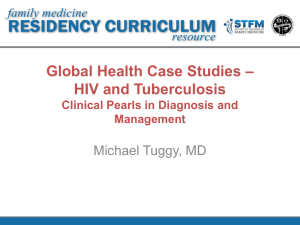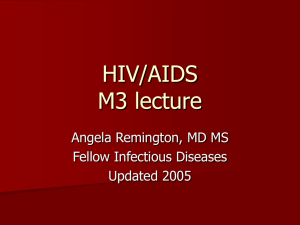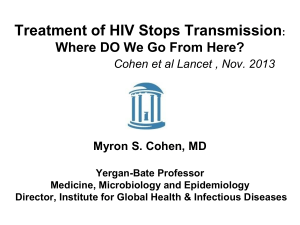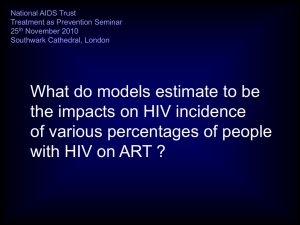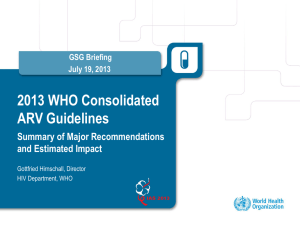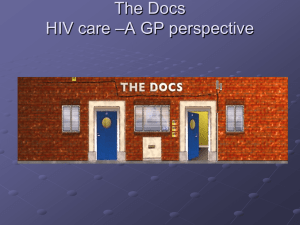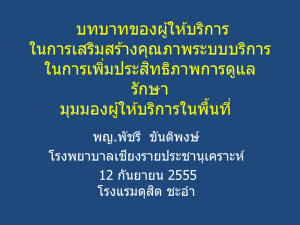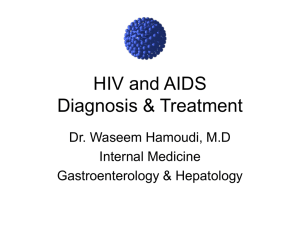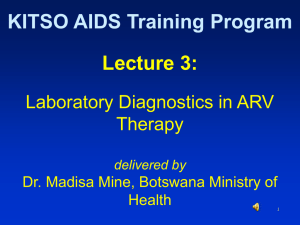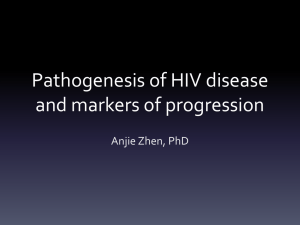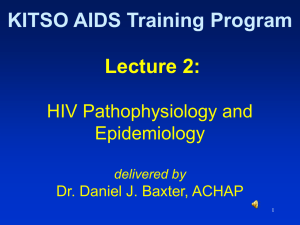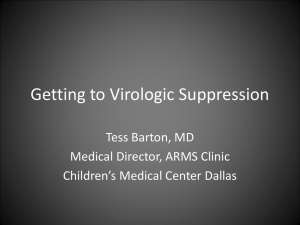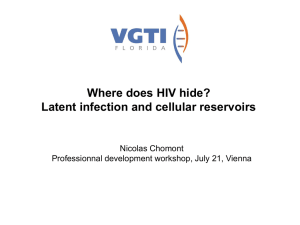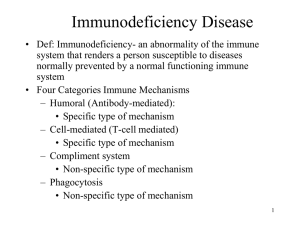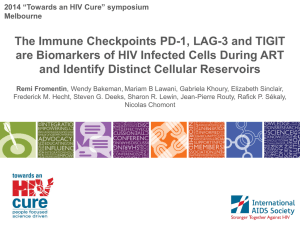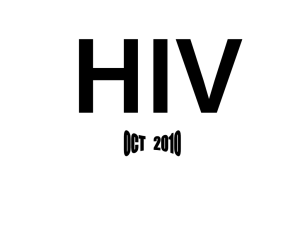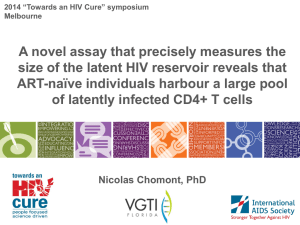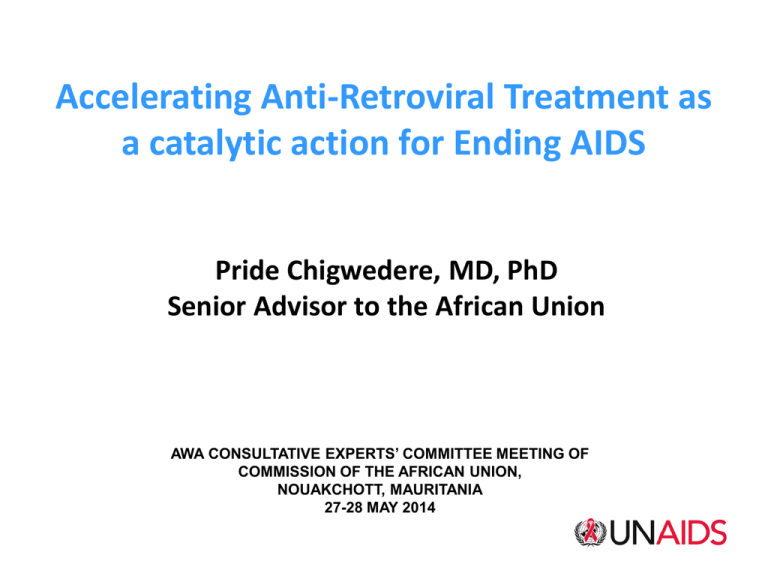
Accelerating Anti-Retroviral Treatment as
a catalytic action for Ending AIDS
Pride Chigwedere, MD, PhD
Senior Advisor to the African Union
AWA CONSULTATIVE EXPERTS’ COMMITTEE MEETING OF
COMMISSION OF THE AFRICAN UNION,
NOUAKCHOTT, MAURITANIA
27-28 MAY 2014
Calls for Ending AIDS
•
•
•
Continental Calls
Abuja + 12 Special Summit
Common African Position for
Post-2015 Agenda
Global Calls
MDGs
2011 Political Declaration
Is it possible to End AIDS?
Progress in last decade
Interventions available
2011 UNGA Political Declaration - 2015 targets
1
2
Halve sexual
transmission
Halve infections
among injecting
drug users
6
Close the global
resource gap and
achieve annual
investment of
US$ 22-24 bn
7
Eliminate gender
inequalities and
sexual violence
and increase
capacities of
women and girls
3
Eliminate new HIV
infections among
children and halve
AIDS-related
maternal deaths
8
Eliminate stigma
and discrimination
4
15 million
people on HIV
treatment
9
Eliminate
travel related
restrictions
5
Halve tuberculosis
deaths among
people living with
HIV
10
Eliminate parallel
systems, for stronger
integration
A focus on treatment is strategic
HIV treatment can normalize survival
Expected impact of HIV treatment in survival of a 20 years old person living with HIV in a
high income setting (different periods)
Dramatic impact of HIV response on life expectancy
years
70
60
50
40
1960
1970
Source: World Bank life expectancy data
Slide courtesy D Birx, PEPFAR
1980
1990
2000
2010
Efficacy of Major Biomedical Interventions for Sexual
Transmission of HIV
96% (72 - 99)
ART in HIV+ partner
(HPTN 052)
Male circumcision
57% (42 - 68)
(Orange Farm, Rakai, Kisumu)
PrEP
44% (15 - 63)
(iPrEx - oral tenfovir/emtricitabine)
STD treatment
42% (21 - 58)
(Mwanza)
39% (6 - 60)
Microbicide*
(CAPRISA 004 - tenofovir gel)
HIV Vaccine*
31% (1 - 51)
(Thai RV144)
0
10
20
30
40
50
60
70
80
90
100
Efficacy (%)
* These interventions are not yet available.
Source: Adapted from Padian et al, 2010; Abdool Karim, 2010; Grant et al , 2010; Cohen et al, 2011
Reducing viral loads to 100/mL
reduces HIV transmission by 99%
Transmissions per year
1.00000
0.10000
0.01000
0.00100
0.00010
0.00001
1 000 000
Source: Attia 2009 AIDS
100 000
10 000
1 000
Viral load / mL
100
10
A clear correlation between HIV treatment and incidence
1.1% (0.8%-1.4%) reduction in HIV incidence, for each
1.0% increase in treatment coverage.
Incidence rate ratio
1.0
p=0.325
p=0.003
0.8
p=0.0001
p=0.013
0.6
0.4
0.2
ART & HIV incidence: Hlabisa, South Africa
0
0%
Source: Tanser et al. Science 2013;339:966-971
30%
ART coverage
60%
90%
0.20
0.10
80%
0.04
70%
0.02
0.01
60%
1995
Source: Gill et al. 2010 Clinical Infectious Diseases
2008
Suppressed viral load (<50/mL)
Incidence of acquired resistance (per year)
Reducing the community viral load
drives down acquired resistance to ARVs
Expanding access to ART is a smart investment:
Case of South Africa
Source: Expanding ART for Treatment and Prevention of HIV in South Africa:
Estimated Cost and Cost-Effectiveness 2011-2050. PLoS ONE 7(2):e30216
Significantly higher employment at CD4≥500
among adults
• Compared to CD4<200,
CD4≥500 associated with
– 5.8 more days/month
– 2.2 more hours/day
(40% more than ref. mean of 5.5)
Regression model coefficients
(1)
Days worked in the
Outcome:
past month
CD4<200
Reference
CD4 200-349
2.7
CD4 350-499
4.8
CD4 ≥500
5.8**
Observations
107
(2)
Hours worked on
usual day in past
Reference
1.8
0.9
2.2*
107
• Linear regression model with age, age-squared, and sex
included as controls
• ** p<0.05, * p<0.10
• Reference group has CD4<200
Those with CD4≥500 worked nearly 1 week/month more than those
with CD4<200, and as much as HIV-uninfected adults
Source: Thirurmurthy, Health Affairs, 2012
Rapid Treatment Scale up …
• Prevents death
• Prevents active disease e.g. TB
• PMTCT of HIV: Option B+
• Prevents new HIV infection
• Saves money and increases productivity
• Lays the foundation for the end of the AIDS
epidemic
Scenarios of ARV eligibility: WHO vision
Source: WHO 2014
Gap in antiretroviral coverage varies within Africa
• 7.6 million people on ART in Africa
• 21.2 million eligible under WHO 2013 Guidelines
• 25 million people living with HIV on continent
Source: UNAIDS estimates 2013
UNAIDS PCB calls for new targets
•
•
•
•
•
Targets drive progress
New scientific evidence
Post 2015
Accountability
A winnable challenge
Country and regional track: regional retargeting
consultations
WCA
MENA
LA&CAR
• 31 March-1 April
• 24-25 April
• 23-24 April, 26-28 May
EECA
• 28-29 April
ESA
• 19-20 May
AP
• 11-12 June
Continental AUC led processes
•
•
•
•
•
July 2013 – Abuja + 12 Special
Summit
Nov 2013 – AUC/RECs
Coordination Meeting
Mar 2014 – Inter-Agency
Meeting on AIDS
May 2014 – AWA Experts
Meeting
June 2014 – AWA HoS Action
Committee
Global track
Political
stream
Technical
stream
Thematic
stream
AU Partners Forum,
5-7 March
Treatment 2015
Advisory Committee
meeting, 3 April
Treatment among
young people and
adolescents, 16-17
April
Vancouver TasP
workshop political
day: high-level
roundtable, 1 April
Price tag for the
next targets, 7-8
April
The perspective of
the civil society on
the next targets, 1415 May
AIDS 2014: Highlevel panel, 20 July
Face-to-face
meeting of the
UNAIDS Treatment
Community, TBD,
June
The next paediatric
treatment targets,
10-11 June
The Role of
Laboratory
Medicine in the next
treatment targets,
16-17 June
Treatment cascade
Notes: No systematic data are available for the proportion of people living with HIV who are linked to care, although this is a vital step to ensuring viral suppression in the community.
Sources: 1. UNAIDS 2012 estimates; 2. Demographic and Health Surveys, 2007–2011
(www.measuredhs.com); 3. Kranzer, K., van Schaik, N., et al. (2011), PLoS ONE;
4. GARPR 2012; 5. Barth R E, van der Loeff MR, et al. (2010), Lancet Infect Disease.
The treatment target
90
90
tested
on treatment
%
%
90
%
virally suppressed
Challenges: Translating Science into Action
•
•
•
•
What is the RIGHT thing to do? Question of Science
Can I choose to do the RIGHT thing? Constrained or
competing choices (Economic and Political Feasibility)
Now that I have chosen the RIGHT thing, can I actually
do the RIGHT thing RIGHT? Question of implementation
Did everything turn out all RIGHT? Outcomes


